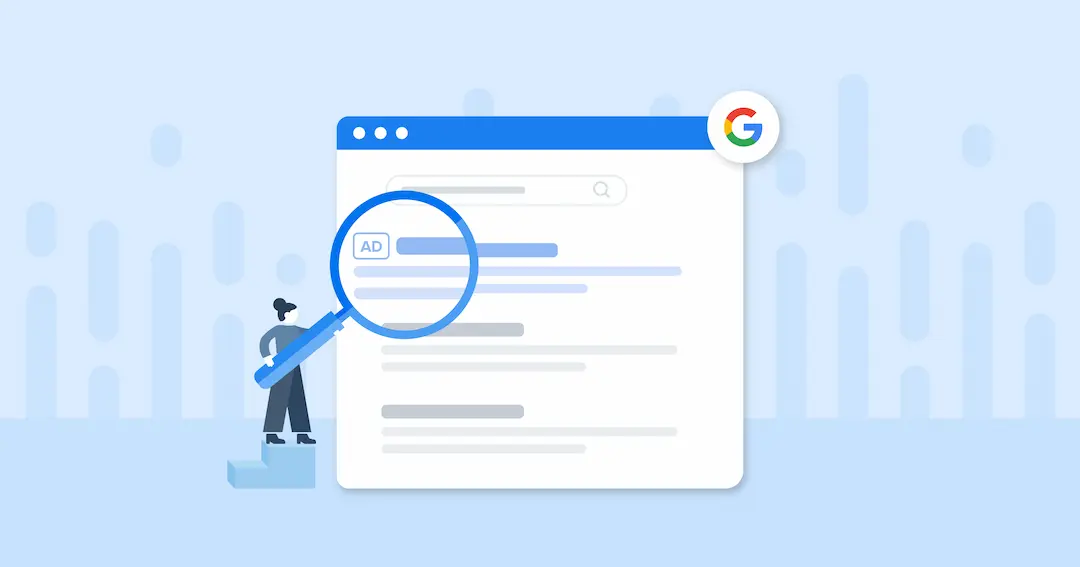You’ve probably heard that “long-form content is king,” but let’s be real—writing 2,000+ words that actually rank isn’t about fluff or filler. It’s about strategy. According to Backlinko, long-form content gets 77.2% more backlinks than short articles. That’s huge for SEO.
In this guide, we’ll show you how to plan, write, and promote long-form pieces that don’t just sit on your site—they drive traffic, get clicks, and build authority. Let’s make your content work harder. Ready? Let’s dive in.
What Is Long-Form Writing (And Why It Still Matters in 2025)?

Long-form writing is content that’s usually more than 1,000 words. It goes deep into a topic and helps answer people’s real questions. Unlike short blog posts or social media blurbs, long-form writing gives more details, more facts, and more help. And yes—it still works in 2025.
Businesses of all sizes use long-form writing to drive growth, improve competitive analysis, and reach their target audiences.
A study by SEMrush found that articles over 3,000 words get 3x more traffic and 4x more shares than shorter ones. That’s a big deal if you want to show up on Google or rank for important keywords, especially those involving long tail keyword variations.
Why long-form writing still matters:
- It helps your site show up on search engines like Google.
- It targets long tail keywords that bring in serious traffic.
- It boosts search volume and keeps users on your page longer.
- It gives space to use keyword variations and answer search queries.
- It builds trust because it feels helpful, not salesy.
How to do Keyword Research for Long-Form Writing That Ranks

Before writing long-form content, you need the right keywords. These are the exact words people type in Google search to find answers. Great keyword research helps your content rank, reach more users, and bring search traffic to your site.
Start by using a keyword research tool like Keyword Planner or Google Trends. These tools automatically generate keyword suggestions and content ideas, and provide suggestion features to help optimize your content. They also show search volume, how hard it is to rank (called keyword difficulty), and even suggestions from a long tail keyword generator.
Here’s how to get started:
- Use a seed keyword (like “healthy snacks”) to explore keyword ideas.
- Look for long tail keywords—they’re easier to rank for and have lower cost per click.
- Check for relevant keywords with high traffic and low competition.
- Check search volumes to understand the level of interest in each keyword.
- Save your list in a CSV file to keep things organized.
How to Choose Relevant Keywords and Organize Keyword Lists
You don’t need 100 keywords. You need the right ones. Focus on specific search intent—what is the person really looking for?
To organize your list:
- Tag keywords as primary, secondary, or FAQ.
- Group by topic or niche (e.g., “email tools” vs “content writing”).
- Use keyword variations to cover different phrases and boost your rank.
- Build your keyword lists around real search queries, not guesses.
Long Tail Keyword Strategy: Your Secret Weapon for Ranking

A study by Ahrefs found that 92% of all keywords get fewer than 10 searches per month—yet they drive steady search traffic.
Many marketers overlook longtail keywords, but these phrases often match high-converting queries. These are your long tail wins, and you can find long tail keywords using various strategie .
Generating Long Tail Keywords vs. Using Short Tail Keywords
What are they?
- Short tail keywords = 1–2 words (e.g., “marketing tools”)
- Long tail keywords = 3+ words (e.g., “free keyword research tool for content writers”)
Key Differences:
- Short tail is broad, competitive, and gets high search volume
- Long tail is focused, has less competition, and targets relevant keywords
- Long tail keywords bring in users who are more likely to convert or stay on your page
Want to drive traffic and rank higher without spending on PPC campaigns? Go long tail. It works.
How to Find Long Tail Keywords in Any Niche
If you want your long-form writing to rank high on search engines, long tail keywords are a must.
These are longer phrases that people actually type into Google—like “best SEO tools for small websites.” They are less competitive, and they match real search queries from users looking for something specific.
Here’s how to find them in your niche:
- Start with a seed keyword like “email marketing” or “fitness plans.”
- Use keyword tools like Google Autocomplete, Keyword Planner, and Google Trends.
- Try free SEO tools to get extra keyword ideas without spending money.
- Look for related keywords, keyword suggestions, and even questions in forums.
- Save your keyword lists in a CSV file so you stay organized.
Smart ways to use Long Tail Keyword Suggestions and Keyword Variations

- Turn Suggestions into Subheadings: Take one long tail phrase like “best keyword tool for beginners”. Make it an H2 or section title in your blog. This helps you stay organized and target specific search intent
- Use Keyword Variations Naturally in Body Text: Use keyword variations and related keywords that sound natural. This helps with SEO and keeps your writing easy to read. Tools like Google Trends or SEO tools can give you helpful ideas.
- Answer Multiple Search Queries in One Post: One post can answer more than one question. Example: Writing about “email marketing tools”? Also answer: “free email tools for small business” or “best email tools for startups”. This improves your search volume and chances to rank.
- Check Forums and FAQs for Suggestions: People ask real questions on Reddit, Quora, and FAQs. Use those to find keyword ideas and new keywords. Add them into your content naturally. Save your best ones in a CSV file or keyword list to reuse
Best Keyword Research Tool for Content Marketers
If you’re serious about long-form writing, you need the right keyword research tool. Why? Because good tools help you find the keywords, search queries, and long tail keywords people are actually using on Google. That means more chances to rank, get search traffic, and reach your target audience.
Here are some great options:
- Google Keyword Planner – free and simple
- Ubersuggest – shows long tail keyword suggestions
- AnswerThePublic – great for keyword ideas based on questions
- Ahrefs or SEMrush – advanced tools for pros
Keep in mind that free versions of these tools may only allow a limited number of keyword searches or suggestions before requiring a paid upgrade.
How to Use Keyword Planner for Long-Form Topic Mapping
1. Start with a Seed Keyword
Begin with a simple topic. This is called your seed keyword. Example: If you're writing about "digital cameras," that’s your seed.
- Type this into the Keyword Planner.
- The tool will show related keywords, like “best budget camera” or “camera for travel.”
- These ideas help you shape your article around real search queries.
2. Filter by Search Volume and Competition
Not all keywords are equal. Some are searched a lot. Others barely get any clicks.
- In the planner, filter by search volume to spot popular terms.
- Look at competition level to see how hard it is to rank.
- Choose keywords with medium traffic and low competition to drive traffic with less effort.
3. Use Keyword Ideas to Build Content Sections
Now, take the keyword list and break it into parts.
- Use long tail keywords like “how to use digital camera at night” as subheadings.
- Add keyword variations into your paragraphs naturally.
- Group similar phrases together—this helps you answer multiple search queries in one post.
4. Compare Short Tail vs. Long Tail Options
Not all keywords are created equal. Some are broad like “SEO tools”—these are called short tail keywords. Others are more specific, like “free SEO tools for bloggers”. These are long tail keywords.
When you write long-form content, generating long tail keywords through suggestions helps you target readers with specific needs. They have lower competition and are easier to rank for in search engines.
Here’s what to do:
- Search your seed keyword in Keyword Planner.
- Compare the search volume and cost per click for both short and long tail options.
- Choose long tail keywords with clear search intent.
5. Check Trends and Seasonality
Before you start writing, know when people are searching. Google shows search volume data monthly. Use this to spot trends.
Want to write about "holiday marketing ideas"? That’s seasonal. Tools like Google Trends help you check if your topic gets traffic during specific months.
Steps to follow:
- Look at the search queries over time.
- Find peaks in search traffic for your main keyword.
- Match your long-form writing to those high-interest periods.
6. Export Your Keyword List as a CSV File
Once you’ve found the best keywords, don’t forget to save them. Google Keyword Planner lets you export your list as a CSV file containing the relevant google keywords .
This file helps you:
- Sort keywords by volume, competition, or topic.
- Share the list with your content team.
- Keep track of keyword opportunities you may want to use later.
7. Bonus: Use Location Filters
A location filter shows keyword search volume based on a specific place. You’ll get better data and more relevant keywords when targeting local audiences. It also helps if you're writing about services available in one area.
How to use location filters:
- Open your Google Ads account and go to Keyword Planner.
- Enter your seed keyword (a basic term like “plumbing”).
- Set your location — like “New York” or “India.”
- Check the search volume data and look for keyword ideas that match.
- Export your keyword lists if needed.
How to Structure a Long-Form Page That Google Loves

- Start with a Clear, Keyword-Rich H1 Title: Use your seed keyword right in the H1 title. This tells Google and your readers what the page is about. Example: “Ultimate Guide to Long Tail Keywords for Beginners". Make sure the title includes relevant keywords people search for.
- Write a Compelling Intro That Answers 'Why Should I Care?': The first paragraph should hook the reader. Explain how your article helps them. Use keyword research tools to find questions people ask. Then answer them up front. Google Trends or Keyword Planner are great for this.
- Use Logical H2s and H3s to Break Up Sections: Break big topics into smaller ones using H2 and H3 headers. It helps users scan your page and keeps your content organized. Also, this helps target specific search intent and boosts your search traffic.
- Create a Table of Contents with Anchor Links: Add a clickable table of contents at the top. Use anchor links to each section. This improves user experience and helps your content appear in Google’s search results as sitelinks.
- Add Internal Links to Related Pages: Link to other articles, keyword lists, or tools on your site.
This tells Google your content is part of a bigger network. Use links with keyword variations like “learn how to analyze keywords” or “see related keyword ideas.” - Use Visuals and Bullet Points to Enhance Readability: Use images, tables, and bullets. Break up big text chunks. Readers stay longer when content is skimmable. You can even embed a CSV file or search volume data to show stats.
- Answer FAQs to Cover More Search Queries: Add 3–5 FAQ questions at the bottom. Use search queries from tools like Google Autocomplete or free SEO tools. FAQs help you cover extra keyword suggestions naturally.
- End with a Strong CTA or Summary: Wrap up with a short summary. Then ask the reader to act: Try a free tool, Sign up for more keyword research tips, Download a keyword planner template. This boosts traffic and engagement.
Keyword to Content: Writing with Strategy

1. Start with the Keyword’s Search Intent
Before you write, ask: What is the reader really looking for?
A keyword like “long tail keywords” might mean the user wants a list, a guide, or a tool. Your content must match that intent. If someone searches for “keyword planner,” they likely want help with keyword research or planning Google ads. Always deliver exactly what they expect.
2. Turn a Keyword into a Complete Topic
A single seed keyword is just the start. Use keyword ideas and related keywords to build your outline. For example, start with “long-form writing,” then cover things like page structure, search volume, and traffic growth. That’s how one keyword becomes a full guide.
3. Use Keyword Variations Throughout the Page
Don’t repeat the same words over and over. Use keyword variations like “long tail keyword suggestions” or “long tail keyword research.” This helps you rank for more search queries and sounds natural to users. Tools like free SEO tools or keyword research tool can help you find these variations fast.
4. Let the Keyword Guide Your Structure
Use your main keyword in your H1 title, intro, and page summary. Then use H2s for key points, just like this article. This tells search engines what each part is about. Good structure also makes your page easy to scan.
5. Weave in Data and Real Examples
Support your content with facts. Mention search volume data, cost per click, or give an example using a keyword tool. This builds trust and gives your reader value. You can also link to your Google Ads account or show charts from Google Trends.
6. Don’t Over-Stuff—Write for Humans First
Yes, you need keywords. But too many makes your writing hard to read. Instead, focus on helpful content. A good long-form writing piece should answer real questions and be easy to follow. That’s what gets more traffic, more shares, and better rank.
How to Promote Your Long-Form Writing with Google Ads and SEO

- Use Google Ads to Jumpstart Visibility: Google Ads can help your content show up fast. If you're writing on a competitive topic, ads help you rank right away—before search engines do. Start with your keyword research. Pick relevant keywords that match what your readers are searching for. You can even use long tail keyword suggestions or search queries to find what works.
- Create a Dedicated Google Ads Account for Content Promotion: Keep things organized. A separate Google Ads account just for promoting content makes tracking easier. This is useful when running multiple google ads campaigns or targeting different audiences. Use a keyword planner or keyword research tool to pick strong, low-competition keywords with good search volume data.
- Target Specific Search Intent with Ad Copy: Your ads should match what people are really looking for—this is called specific search intent. Use keyword ideas and match your ad text with the intent behind each search. For example, if someone types “how to write better blog posts,” your ad should say that exactly. It builds trust and gets clicks.
- Use SEO to Build Long-Term Traffic: While Google Ads work fast, SEO helps you get free traffic over time. Use free seo tools to improve your page titles, meta descriptions, and content. Make sure your post uses keyword variations and includes related keywords. Over time, you’ll get more users, clicks, and higher rank.
- Repurpose Your Content for Backlink Outreach: Break your post into small parts. Turn them into LinkedIn posts, Twitter threads, or guest blogs. This gives you more chances to generate backlinks, grow your site authority, and drive even more traffic. Use phrases that link back to your original content with the right anchor text.
- Submit to Google Search Console: After publishing, add your page to Google Search Console. It helps Google find your page faster. You can see your search traffic, search queries, and improve how your page performs over time. If there's an error, you'll catch it early.
- Combine Paid and Organic for Maximum Reach: The best results come from using both SEO and Google Ads. Paid traffic gives you instant visitors. SEO builds over time and costs less. Together, they help your long-form writing reach more people and rank better.
Google Trends: Writing About What People Actually Search For
Google Trends is a free tool that shows the search volume data for popular topics over time. You can compare keywords, check what’s trending in your niche, and even see changes by country or state, which is essential for running effective google ads campaigns .
Why It Matters for Long-Form Writing
If you write about topics no one searches for, your content won't get traffic—no matter how great it is. Google Trends helps you avoid that.
- It shows related keywords people are typing into search engines.
- You can check keyword ideas that are growing fast (called “rising queries”).
- It helps you match your article to specific search intent.
How To Use It:
- Go to Google Trends.
- Type your seed keyword (like “smartphones”).
- Explore popular keywords, keyword suggestions, and rising topics.
- Match those trends with your long-form writing topics.
- Use them to boost your keyword research and get more search traffic.
- Google Trends can show how interest in a given keyword rises or falls throughout the year.
Google Autocomplete: The Free Goldmine for Keyword Discovery
It’s a tool that shows popular search queries as you type. These are based on real-time search volume data.
Why does it matter for long-form writing?
Because it helps you find relevant keywords, keyword ideas, and even phrases that your readers care about.
How to use it:
- Start typing a topic or seed keyword (like “best SEO tool”)
- Note the keyword suggestions Google offers
- Use these to build a keyword list for your article
- Match them with your specific search intent
Final Note
Long-form writing still works—and now you know why. From keyword research and long tail strategies to smart page structure and SEO tools, it’s all about planning content that ranks and helps real users. Use the tools to analyze keywords , follow the data, and write with purpose. Done right, your content won’t just get views—it’ll get results.

.jpg)
.jpg)
.jpg)
.jpg)
.jpg)
.jpg)
.jpg)
.jpg)
.jpg)
.jpg)
.jpg)
.jpg)
.jpg)
.jpg)
.jpg)
.jpg)
.jpg)
.jpg)
.jpg)
.jpg)
.jpg)
.jpg)
.jpg)
.jpg)
.jpg)

.png)
.png)
.png)
.png)
.png)
.png)
.jpg)
.jpg)
.svg)

